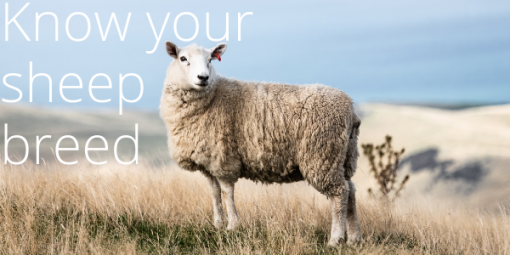Have you ever wondered what sets merino wool apart from Bluefaced Leicester, or Jacob, or virgin wool? We're here to help!
Merino wool
It's estimated that there are over 1000 distinct sheep breeds around the world! With light coloured sheep, dark sheep, and sheep bred specially for their wool, there's a vast quantity of breeds to choose from. The favourite among knitters and crocheters around the world, however, is definitely merino wool.

Above: left, a merino sheep. Right, Chris the merino sheep, unshorn for several years
Many are familiar with the stories of sheep who escape into the mountains, only to be found years later laden with wool. Those are merino sheep! Bred for their ultra-soft merino wool, these sheep's fleeces will continue to grow, and so need shearing for their health. Sheep with overgrown fleeces can fall and be unable to get back up due to the weight of the wool - plus, it's uncomfortable for them to be carting around that much wool at once!
Most Merino sheep are bred and raised in warmer climates
Wool is measured in microns. One micron is .0004 inches. An average human hair is 70 microns, and standard merino wool is 21-23 microns. Fine merino is 19, Superfine is 17, and Ultrafine is 15. In comparison, Bluefaced Leicester wool is around 25 microns.
Bluefaced Leicester wool
Here in the United Kingdom, there are over 65 breeds, more than any other country on earth. Some of them are amazing for hand knitting and crochet, like Bluefaced Leicester sheep, known for their light fleeces and silvery-blue faces. The wool from Bluefaced Leicester sheep is soft enough for next to the skin garments, and has a delicate shine.

Virgin wool
This isn't breed-specific, and can from from any sheep breed. Virgin wool usually means a lamb's first shearing, where the fibres are longer and softer than the fleece that will grow back in later. However, some clothing chains use the term to mean wool that hasn't ever been recycled.
Because this can come from any sheep breed, there is no guarantee what the micron measurement will be. Some virgin wool, also known as lambswool, will be very soft, while other breeds will yield a more rusting and hard-wearing wool.

Corriedale wool
These fleeces average about 26 microns, more rustic than merino and Bluefaced Leicester wools, but still soft enough for thick, robust garments. Corriedale sheep are farmed all over the world, and are a favourite in Uruguay and the Falkland Islands!
A Corriedale fleece from a mature ewe ranges from 10-17 lbs in weight - that's a lot of yarn - but there is some weight lost in the washing and carding process from dirt and bits of leaves that get rinsed away.

Rambouillet wool
Known as the "French Merino" sheep, this breed's roots go back to 1786 when a French monarch bought 300 Spanish merino sheep. Rambouillet tend to be larger than Merino, and it's thought that over 50% of sheep in the western USA have rambouillet blood.
With a micron measurement from 18-23, this breed has a softness comparable to merino wool. It is farmed all over the USA, a popular choice for ultra-soft knits.





